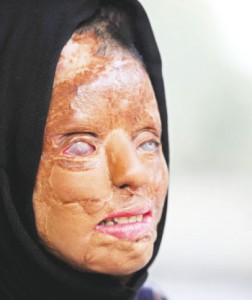#Indianwomen: Enforcement is three parts of the law on acid attacks
It’s not always given that a blog revises itself with a morsel of welcome news within exactly 14 days (and then proceeds to cast doubt on it all).
On July 6, the dreadful phenomenon of roughly 1,000 acid attacks a year on Indian women appeared just as horrific as ever. Sales of the corrosive stuff remained unregulated. This blog said as much, pointing out that it was about as easy to buy acid anywhere in Delhi as to buy a packet of noodles. Or a 1.5-litre bottle of cola. In fact, it was cheaper to buy acid than cola.
But on Thursday, the Indian Supreme Court said that victims of acid attacks should be given more financial help (at least $5,000) by state governments, in order to help with rehabilitation. It also decreed that acid would henceforth only be sold to people over 18, with a valid identity card and a good reason why they needed it. Each sale had to be reported to the police, the Court said. That’s welcome in all sorts of ways, not least as a sign that the authorities view the challenge seriously.
However, at the risk of appearing curmudgeonly, India’s problem is not really the lack of regulation but enforcing it. The incidence of attacks fell in Bangladesh after it bought in restrictions on acid sales. It’s often down to the zeal with which a rule is enforced.


